Plantersville, Texas, Grimes County town with a painted church. (original) (raw)
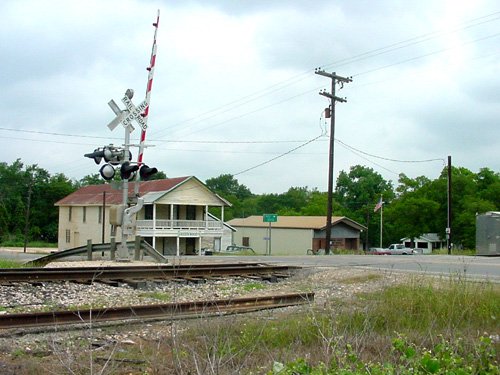
Plantersville
TE photo, June 2004
History in a Pecan Shell
Settled first by Arkansas and Alabamans in the 1830s, The town didn�t jell until the early 1840s. A two-story Masonic building was built in the early 1850s, using the familiar school below � lodge above design.
In addition to the school, two churches used the lodge building until they could construct their own buildings. The community�s first store opened before 1860 and a post office was granted in 1856.
The name (said acknowledge the antebellum planters) is credited to Mrs. J. L. Greene. The community got a shot-in-the-arm in 1879, when the Montgomery Central Railway connected Montgomery and Navasota with a stop at Plantersville. That railroad was bought by the Gulf, Colorado and Santa Fe a few years later and the line expanded to Conroe and Beaumont to the east � and Somerville to the west.
Russian, Pole and German Catholic immigrants created a need for a Catholic church and in 1894, St. Mary�s was organized. The 1890 population was 400 but for some reason, it had fallen to a mere 150 by 1915. It rebounded somewhat to 200 by the mid 1930s � and remained there for decades. It was still 200 in the late 50s and 212 for 1990 and 2000.
Plantersville, Texas Historic Destinations:
Plantersville Cemetery
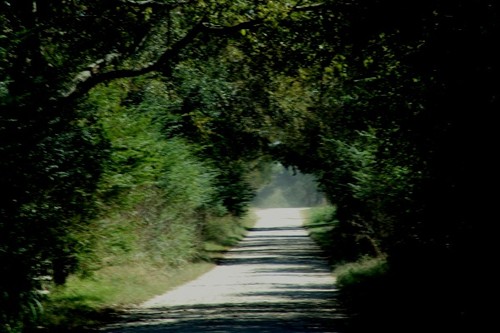
The spooky road to the Plantersville Cemetery
Photo courtesy Ken Rudine, October 2007

Plantersville Cemetery
TE photo, June 2004
Historical Marker: Cemetery Road off FM 1774
Plantersville Cemetery
Settlers from the southern United States began arriving in this area as early as the 1830s. A post office opened in 1856 as Plantersville, a name suggested by Sarah Greene to honor local planters. Members of her family are buried here.
This site was used as early as 1864 as a burial ground when young H.G. Jameson was interred here; his is the oldest marked grave. At least three other gravesites date to that same year, and there may be earlier ones unmarked. In 1866, landowner and postmaster Peter Walton donated the land for use as a community cemetery, later enlarged in 1911 and 1958.
Today, this burial ground is the final resting place of pioneers and their descendants, military veterans, and notable Texas families. Mary Benigna Durst Blake (1830-1864), daughter of Texas Revolution figure John Marie Durst, and her husband Gen. Thomas Walter Blake (1822-1905), a circuit rider and lawyer, were both buried here (he was later reinterred in the Texas State Cemetery in Austin). Still in use, the Plantersville Cemetery remains a link to the community's history.
Historic Texas Cemetery - 2003

Plantersville Cemetery Historical Marker
Photo courtesy Ken Rudine, October 2007

Civil War Tombstone
TE photo, June 2004
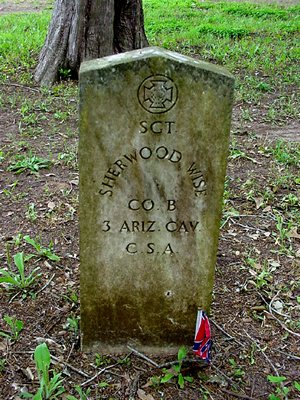
Civil War Tombstone
TE photo, June 2004
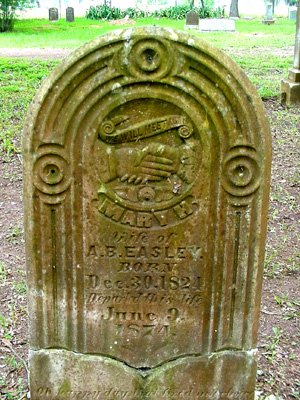
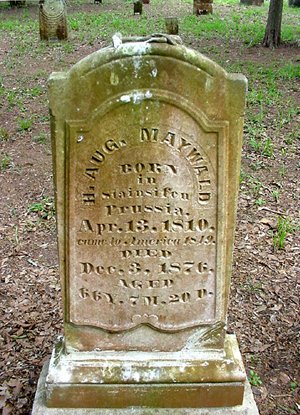
Prussian Tombstone
TE photo, June 2004
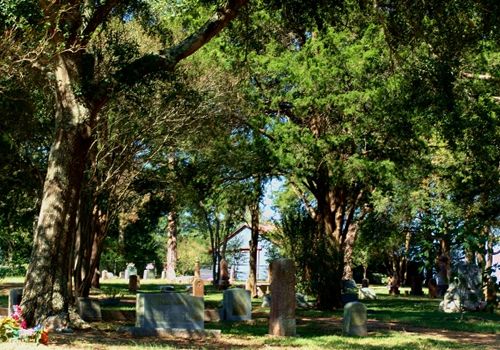
Texas Escapes, in its purpose to preserve historic, endangered and vanishing Texas, asks that anyone wishing to share their local history, stories, landmarks and recent or vintage/historic photos, please contact us.
